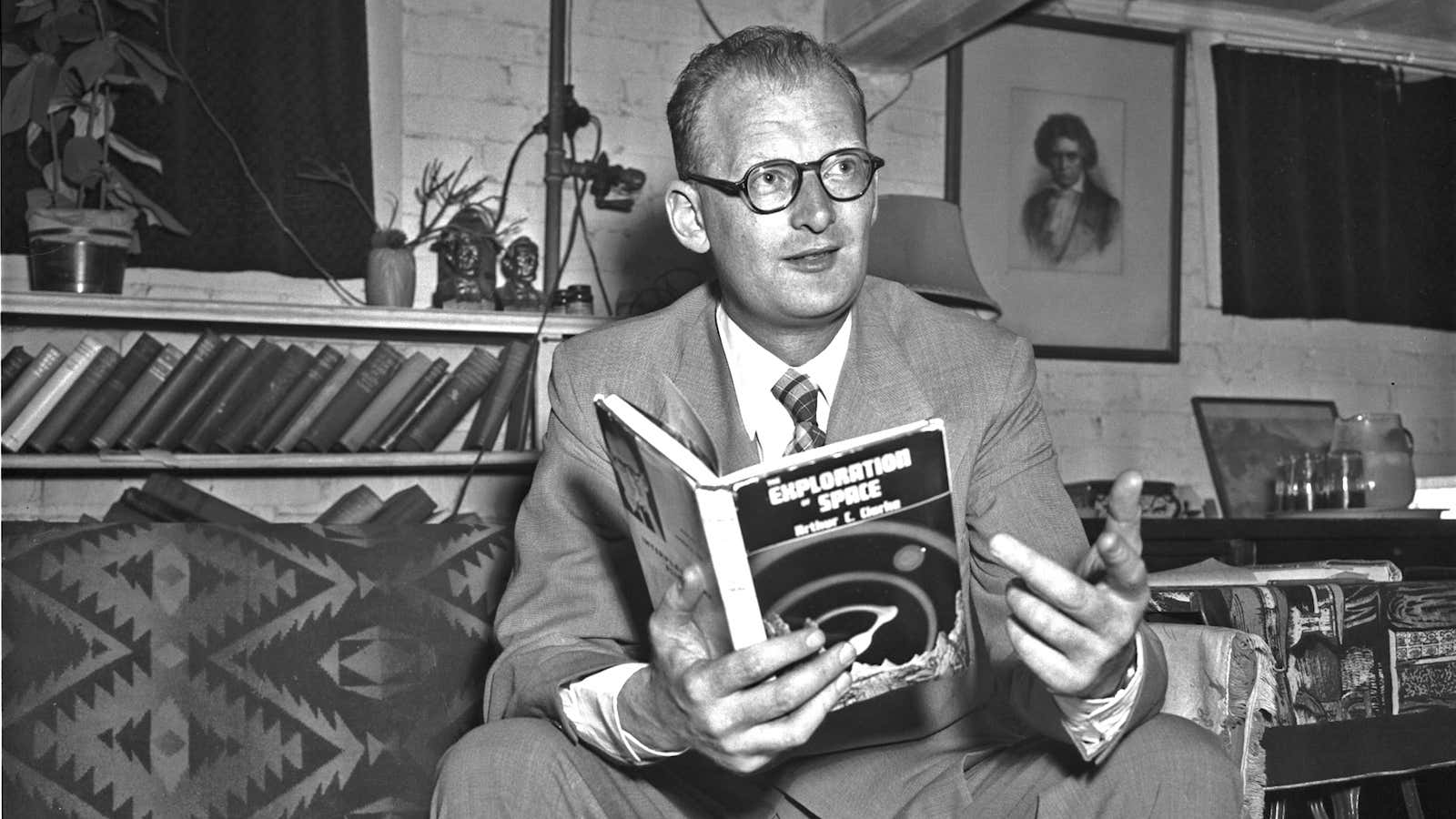Mark Twain is best known for all-American novels like The Adventures of Huckleberry Finn and Tom Sawyer. But he was also a forward-thinking futurist. Back in 1898, in his short story From The London Times, Twain described a gadget called the Telelectroscope—a “limitless-distance” telephone that connected people around the globe. “By grace of this marvelous instrument he was almost as free as the birds of the air… Now and then I would hear him say, ‘Give me Hong-Kong’; next, ‘Give me Melbourne’ … Sometimes the talk that came from those far regions through the microphone attachment interested me, and I listened.”
Indeed, when it comes to technology, reality often plays catch-up to fiction. So it should come as no surprise that some of the people responsible for the greatest technological strides of the past decades cite literature as a source of inspiration. Here are a few of the books that have fired up the imaginations of our biggest innovators and fed their ambition to transform the world.
Dial F For Frankenstein
Internet inventor Sir Tim Berners-Lee drew his inspiration from science-fiction writer Arthur C. Clarke, who coined the famous quote “Any sufficiently advanced technology is indistinguishable from magic” and described satellites in such detail he could have patented the idea 20 years before they became reality. Clarke’s story Dial F For Frankenstein, set in 1975, describes an automatic telephone exchange system with the equivalent number of switches as there are neurons in the human brain.
The Aenid
Facebook chief Mark Zuckerberg reads a lot—in 2015, he even fit reading a book every two weeks in around his rather packed schedule. But his choice of favorite tome might raise a few eyebrows: The Aeneid by Virgil. It recounts Aeneas’ quest after he escapes the ruins of Troy to build a city that “knows no boundaries in time and greatness.” Some might say that his empire-building tendencies could have its roots in his penchant for Ancient Roman classics.
Snow Crash
Google co-founder Sergey Brin named Neal Stephenson’s Snow Crash as one of his favorite novels, and other tech innovators cite it as having directly inspired the development of Google Earth. He’s not the only one to have been inspired by the 1992 novel and its description of online social networks and virtual worlds: Second Life creator Philip Rosedale is also a fan, and the platform’s users routinely using the novel’s term “the Metaverse” to describe Second Life. (In the book, the term describes a virtual-reality-based internet much like Rosedale’s latest VR project, High Fidelity.) Appropriately, Stephenson is currently the “chief futurist” at mixed-reality (MR) company Magic Leap.
Tom Swift
You might not have heard of Jack Cover, but you will be familiar with his most famous invention: the Taser. The NASA researcher was inspired to create the device first described in his favorite childhood book, Tom Swift and His Electric Rifle (which, we should note, was riddled with racist narratives including the fictional taser being used on “savages” while raiding Africa for ivory). In fact “Taser” is an acronym for Thomas A Swift Electric Rifle.
Neuromancer
Another book that paints a picture of what virtual-reality worlds might look like is William Gibson’s Neuromancer. Jeremy Bailenson, founder of Stanford University’s Virtual Human Interaction Lab, credits the book with inspiring him to become a scholar of avatars. The 1984 book about a washed-up hacker hired to pull out a risky hack against a mysterious employer also inspired The Matrix films.
Greek mythology
Mythology has helped inspire the field of artificial intelligence (AI) and robotics. Bristol University scholar Genevieve Liveley regularly lectures on the theme of “cyborgs and robots in Greek myth,” and at the recent Love and Sex with Robots conference in London, she delivered a fascinating talk on how the myth of Galatea—the ivory statue which is brought to life by the sculptor Pygmalion—can be extremely helpful in informing how we think about human-machine interaction in future. “As a historian, I’m reminded that when we try to anticipate the future, our cognitive parameters and frames are shaped by the past,” she said at the conference. “We are really, really bad at anticipating the future with any degree of certainty, so one of the ways we try and do it is by telling stories.”
Hitchhiker’s Guide To the Galaxy
In his book Elon Musk: Tesla, SpaceX, and the Quest for a Fantastic Future, tech journalist Ashlee Vance wrote that Douglas Adams’s Hitchhiker’s Guide to the Galaxy was a major inspiration for the entrepreneur. Musk says the books made him realize how “a lot of times the question is harder than the answer.” The novels, which have been translated into more than 30 languages, follow the misadventures of the last surviving human following the demolition of planet Earth by an alien construction fleet. Plenty of other members of the tech crowd are big Adams fans, too. In fact, if you ask Google for the answer to the novel’s central question—the meaning of life—the search engine will promptly return, in calculator mode, the story’s answer: 42.
Correction: A previous version of this article stated that The Aeneid was written by Ovid, not Virgil.




